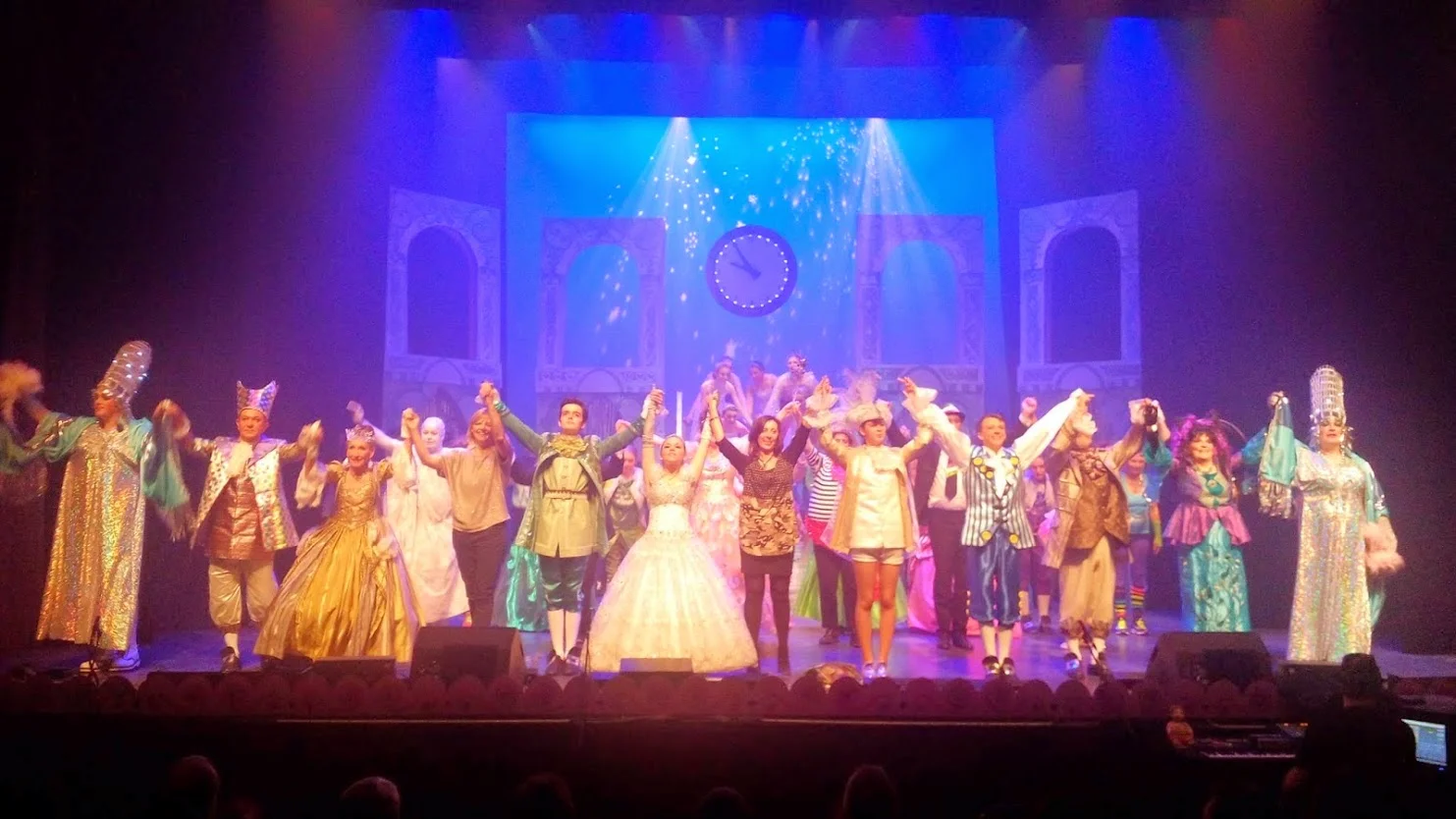Ableton Live in the theatre
Ableton Live is immensely useful for theatre performance. I do a lot of the electronic sound effects in Ableton Live where I'm using an Akai APC40 and keyboards to trigger things in Ableton. The sounds have plug-ins applied and are bounced down in advance to avoid CPU load during the live performance. Ableton is also used to trigger video cues and projector shows plus triggering steam jets and smoke machines.
One advantage that handling sound design for a theatre offers is that it is at a fixed location, unlike touring with a band, where venues can differ significantly one from another. However, mixing a live band is one thing but a theatrical performance - especially one so dependent on special effects, with infinite potential for timing changes and pratfalls (both literal and metaphorical) - calls for extreme adaptability and great watchfulness. There's no way the show can be put on a memory stick and left more or less on autopilot. Timing the show and all the special effects to the performers' actual movements needs to be done quite literally footstep by footstep.
This year the Secret Panto Society (SPS) are working on a production of Cinderella and I have four main categories of sound which have to be provided. These are as follows:
Songs
Dances
Atmospherics
Sound Effects (SFX)
Songs, dances, atmospherics
The show has recorded music running pretty much continuously throughout, but especially with pantomime, the performers are working off the audience's reactions so sequences never last the same amount of time and musical climaxes are very hard to nail down.
Songs and dances don't present any real problems as the performers follow the music with little scope for ad lib variation; for the atmospherics it is a different matter as the performances change each night and are very dependent on audience reaction. This is particularly noticeable here in the south of France where we have a multi-cultural spread of people and we find that the audience during some performances may be predominantly German or French or Spanish, whilst the last performance is almost exclusively British in make up. The reactions and music timings vary enormously with these different audiences.
Here you can see my Ableton Live project with tracks to cover songs, dances and atmospherics.
I often split the music into sections, a mix of holding loops and transitional bits of music. Over the course of one scene I may cycle through 5 pieces of music, vamping sections as needed, then moving into the next bit of transitional music leading into another holding loop, and so on.
Ableton Live can easily handle all that vamping and changing with minimal programming and does it in a musical way. I use an Akai professional APC40 connected to Ableton with each APC40 Scene relating to a scene in the pantomime and the APC40 tracks used for songs, dances and atmospherics. Using the faders on the APC40 I can respond to the dynamics in the piece of music and the dynamics of the performance, simultaneously, and make the music complement the performance by riding the music up and down, and fading it out in a musical performance-responsive manner. If required I can also programme in volume automation, filter sweeps, xfade to reverb, complex audio effects processing simply by sending MIDI control change information from the APC40.
SFX
In addition to running the music side of things, Ableton is also taking care of some of the spot sound effects. This is done from a midi keyboard connected to Ableton and triggering a Drum rack. Each drum position can hold a specific SFX which may also have it's own complex audio effects. The outputs are sent to different outputs on my audio interface allowing me to control exactly where in the theatre the sounds should appear i.e. outputs 1&2 are routed to FOH L&R, 3&4 to Upstage L&R, etc.
Triggering a sound effect using Simpler
Ableton is an immensely powerful tool for creating sound designs - DAWs like PT and Logic are only just beginning to catch up with Ableton in terms of pitch/time manipulation. It is also particularly useful for sitting in rehearsals and throwing in SFX which can be fixed more permanently for performances.








